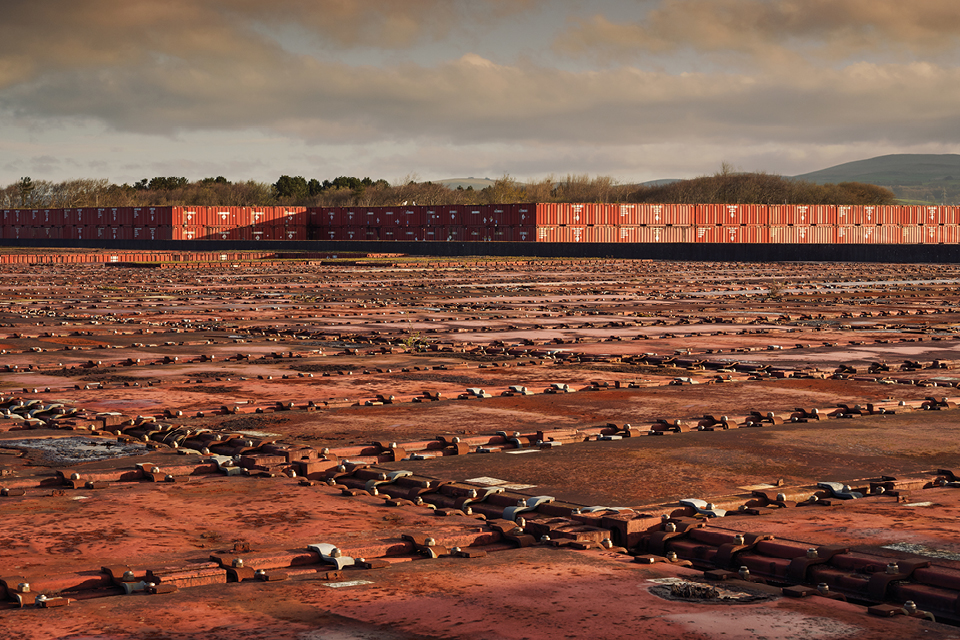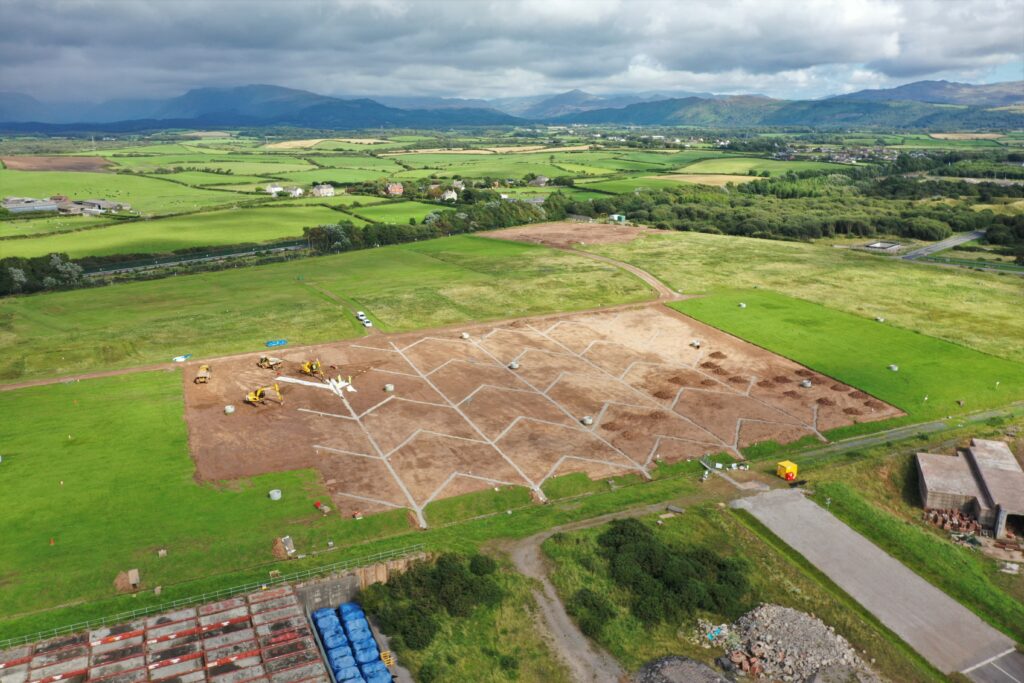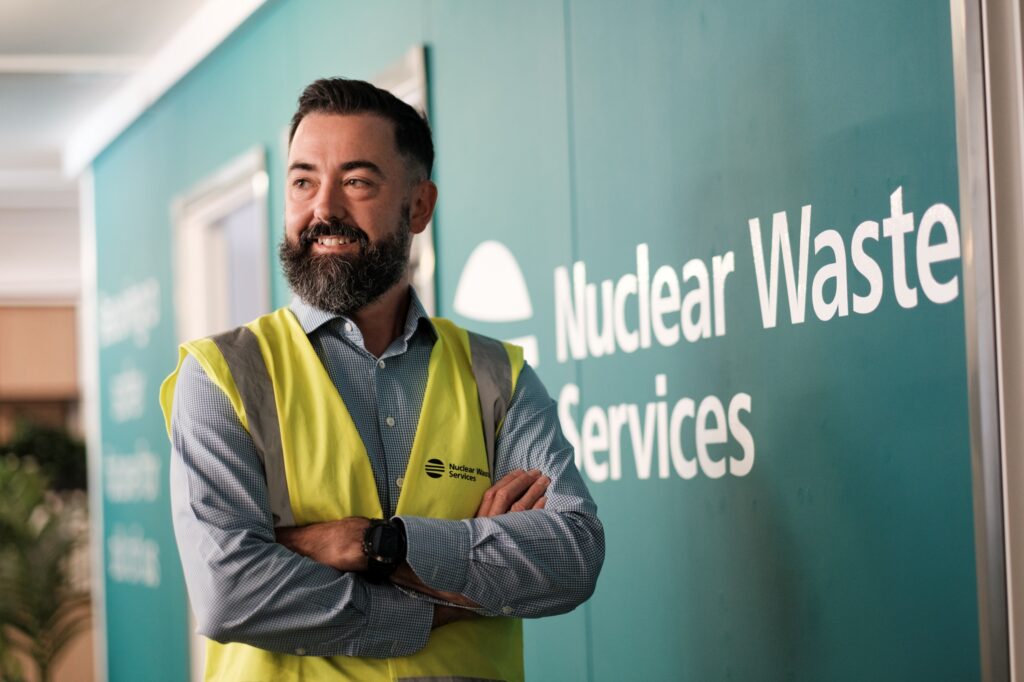Blog: How is the UK permanently disposing of its low-level radioactive waste?
By Mike Pigott, Director of Sites and Operations at Nuclear Waste Services
Disposing of low-level radioactive waste is a long-term mission. We must think about how it impacts people and the environment today and how it will impact them in hundreds or even thousands of years.
This means ensuring the radioactive waste we generate in the UK is safely and securely managed now and permanently disposed of when facilities are ready for closure.
The Repository site in Cumbria has been the main disposal site for the UK’s low-level radioactive waste since 1959. Initially, this waste was placed into clay lined trenches and covered over with an interim cap. Since the 1980s waste has been received in steel containers, which are filled with grout and placed in engineered concrete vaults ready for final disposal.

The importance of capping
With a near-70-year legacy of receiving low-level radioactive waste, we are now ready to transition to final disposal, marking a key phase in the Repository’s lifecycle.
This is where ’capping’ comes into the picture.
Capping is a key part of the disposal lifecycle and will provide an engineered protective cover over legacy disposal trenches and vaults, which house low–level radioactive waste – making it ready for final disposal and permanent closure.
Comprising of layers of material, totalling up to 10m thick, this ‘cap’ will permanently protect people and the environment by layering natural aggregates, such as gravel, sand, stones and rocks, as well as engineered materials like geotextile fabrics and bentonite-enriched soil. Multiple layers of material will gradually form a dome-like shape over the trenches and vaults up to 10-metres-high. This will serve as an impermeable barrier above the waste and once complete to anyone passing by will simply look like a small hill, planted and grassed, on the edge of the Lake District fells.
From an engineering standpoint, this is quite an undertaking. When full construction begins, it will involve gradually bringing a large amount of materials to site by rail (using our existing rail sidings), moving it onto the cap and placing it precisely in the various layers to build up the protective engineering.
It’s vital we’re able to build the cap in layers like this because each layer will provide a different function. Some layers will allow gases like methane to distribute, others will help form the right shape of the cap, and some will help water drain away.
Using natural materials means we can have confidence in the cap working for longer as evidence obtained over centuries of construction activities has shown that these materials have proven longevity. There will also be a layer to deter human intrusion, made up of large stones, designed to discourage future generations from digging through the cap, in the event that societal evolution means the understanding of what is under the cap has been lost.
Constructing the cap protects the environment and people now and in the future from radioactivity. It will allow us to keep the waste dry and puts in place key requirements from our Environmental Safety Case and fulfils our obligations under the Repository’s Environmental Permit from the Environment Agency (EA).

How work is progressing
The journey to capping goes back over a decade to the development of the 2011 Environmental Safety Case. Since then, we have matured the design of the cap, obtained planning permission to build it, completed a multi-million pound ‘enabling works’ phase (to ensure the Repository site is ready for construction activities), and procured the contract for the first stage of the works.
By March 2025, we’ll start to see the works get underway.
Getting effective results through collaboration
Of course, a huge project like this requires a high degree of collaboration and working closely with a wide range of stakeholders to bring the capping programme through to completion.
One of our key stakeholders is the EA, as we ensure compliance with environmental standards and the conditions of our Environmental Permit, and Cumberland Council as the local authority, which has provided planning consent and set conditions for the site development.
We pride ourselves on trying out utmost to be a good neighbour, and working closely with the community. Our site borders the village of Drigg, so engaging with the community is a crucial part of our mission. We’ve held drop-in sessions and site tours to share more details about what residents will see and hear over the coming months of operations. Plans are in place to mitigate and minimise any associated noise, dust, traffic, ecological and visual impacts.
The final cap: what completing the programme will mean
The UK has been producing and managing radioactive waste for many decades and will continue to do so for many more. Nuclear power is a key part of the country’s low-carbon energy mix and essential to securing our energy supply in the future. We also use radioactive materials in the UK’s defence, research, medical and industrial sectors.
At NWS, we’re involved in a number of crucial long-term activities to support our vision to making nuclear waste permanently safe, sooner – and putting the final cap on the vault and trenches at the Repository is one of these. By procuring, importing and emplacing thousands of tonnes of capping materials in line with planning conditions and quality requirements, we’ll achieve permanent closure of this important disposal site, ensuring environmental protection and safety for generations to come.
Having what I believe to be a fairly unique experience over my career of having filled containers with low level waste, grouted and emplaced them in the vault and now capping the disposal facilities, I can’t wait to get started on completing this crucial lifecycle.

